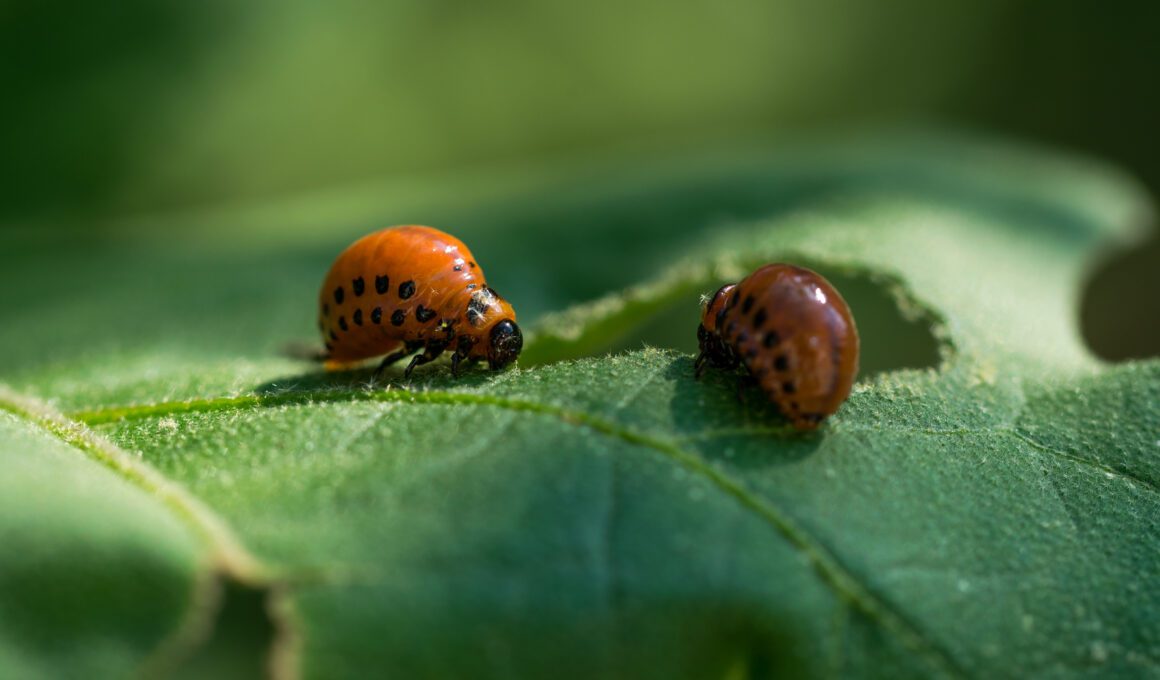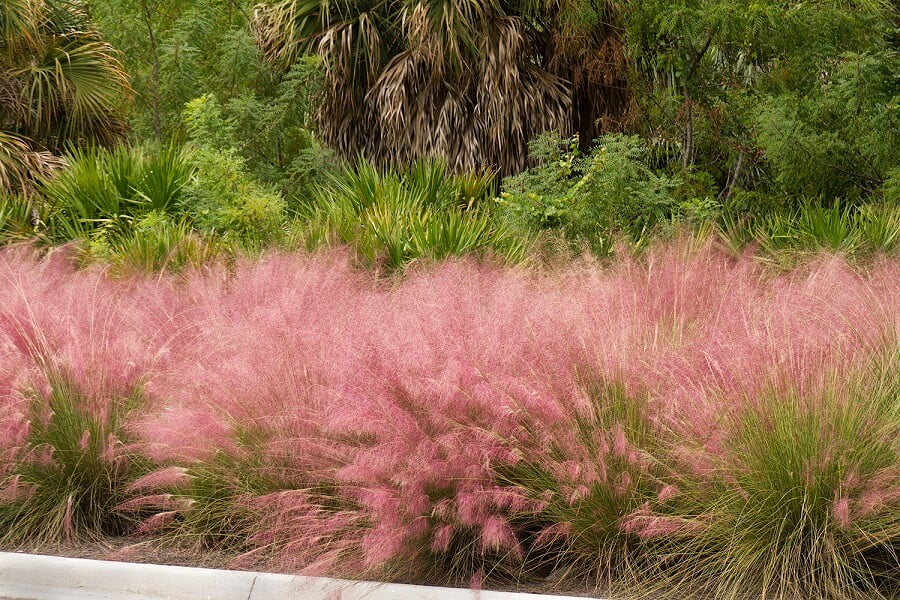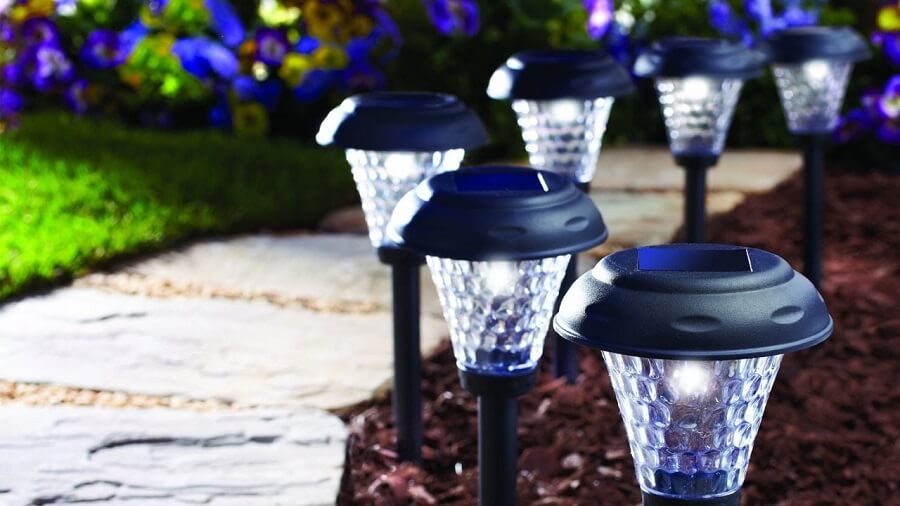Ah, summer! It’s the time of year when we can finally enjoy our gardens in full bloom, bask in the sunshine, and watch as all our hard work pays off.
But it’s also prime time for some uninvited guests to make an appearance – you know, those pesky garden pests that want to feast on your beloved plants! Don’t worry though; there are plenty of natural and sustainable ways to keep them at bay while keeping your garden safe and healthy.
In this article, we’ll explore a variety of effective pest control methods that won’t harm the environment or pose any risks to you and your family.
From homemade remedies using ingredients you probably already have lying around your house, to introducing beneficial insects who will happily munch away on those unwanted critters – you’ll be armed with everything you need to protect your precious garden from these annoying intruders.
So let’s dive in and learn how we can keep our outdoor havens looking beautiful all season long!
Identifying Common Culprits
Picture yourself stepping out into your vibrant summer garden, the sun beaming down on you as you inhale the sweet scents of blossoming flowers and fresh vegetables. As you stroll through this lush paradise, admiring the fruits of your labor, something catches your eye – a plant that looks a little worse for wear.
Upon closer inspection, it becomes clear that there’s an unwelcome guest wreaking havoc in your beautiful oasis: pests. One key to addressing these unwanted visitors is proper identification. There are numerous culprits who may be responsible for damaging leaves, consuming fruit or even creating entire colonies within your plants.
Some common offenders include aphids, which cluster together on stems and leaves; caterpillars, whose voracious appetites can quickly strip foliage bare; and slugs or snails that leave slimy trails behind them as they munch away at tender vegetation.
Recognizing the signs of infestation early will help you take appropriate action before more severe damage occurs.
Now that you’re familiar with some usual suspects in your summer garden pest lineup, let’s explore ways to manage them using natural and sustainable methods.
It’s important to remember that pesticides should always be a last resort – not only do they harm beneficial insects like bees and butterflies, but also pose risks to our health and environment when used excessively.
Instead, opt for eco-friendly solutions such as introducing predatory insects (ladybugs love feasting on aphids!), utilizing barriers like copper tape around raised beds to deter slugs and snails, or planting companion species known to repel specific pests.
By employing these strategies in tandem with regular monitoring, we can safeguard our gardens while minimizing our impact on Mother Earth!
Embracing Companion Planting
One of the most effective ways to keep your summer garden free from pests without using harmful chemicals is by embracing companion planting. This method involves growing specific plants close together because they can help each other in various ways, such as repelling insects or improving soil health. It’s also a sustainable practice that benefits both your garden and the environment.
Here are some popular and easy-to-grow companion plants for you to try out:
- Marigolds: These vibrant flowers not only add beauty to your garden but also release a strong scent that deters many pests like aphids and whiteflies.
- Basil: By planting basil near tomatoes or peppers, it helps keep away common nuisances like hornworms while enhancing the flavor of its companions.
- Nasturtiums: They attract beneficial insects like ladybugs while deterring pests such as squash bugs and caterpillars.
- Lavender: Its lovely fragrance keeps mosquitoes and flies at bay, making it perfect for borders around outdoor seating areas.
- Garlic: When planted near roses, garlic can help protect them from fungal diseases and ward off aphids.
With this natural pest control strategy, you’ll be able to enjoy a safer and more harmonious garden space where all living things thrive. Companion planting is about working with nature rather than against it, so why not give it a shot?
Not only will you see fewer pesky critters munching on your precious plants, but you’ll also contribute to creating a healthier ecosystem. So go ahead, experiment with different plant combinations, and watch your summer garden flourish!
Homemade Pest Repellents
As the saying goes, “an ounce of prevention is worth a pound of cure.” In our quest to keep summer garden pests at bay, we can look towards homemade pest repellents as an effective and natural solution.
Making your own repellents not only saves money but also ensures that you know exactly what’s going onto your plants – keeping them safe from harmful chemicals.
Here are some simple yet powerful recipes for homemade pest repellents:
| Ingredient(s) | Instructions |
|---|---|
| Garlic & Onion Spray | Mix 1 minced garlic clove, 1 chopped onion, and 1 quart of water in a container. Let it sit for an hour before straining the mixture into a spray bottle. This pungent concoction will repel many common insects like aphids and whiteflies. |
| Chili Pepper Spray | Combine 1 tablespoon of chili powder with 1 quart of water and a few drops of liquid soap (preferably biodegradable). Shake well and transfer to a spray bottle. Use this spicy mix to deter ants, spider mites, and other unwanted critters. |
| Essential Oil Blends | Blend together essential oils such as peppermint, lavender, or rosemary with water in a spray bottle (10-15 drops per cup of water). These fragrant oils have various insect-repelling properties that work against mosquitoes, flies, and more. |
So go ahead – give these natural remedies a try! Not only will they help protect your precious plants from pesky intruders but also offer peace of mind knowing that no harsh chemicals are being used in your beautiful garden oasis.
By choosing sustainable methods like these homemade pest repellents over store-bought alternatives laden with toxins, you’re actively contributing to creating healthier environments for both people and wildlife alike.
After all, isn’t one of the joys of gardening the ability to cultivate life while staying in harmony with nature?
Employing Physical Barriers
Now that we have explored some fantastic homemade pest repellents, let’s move on to another effective method of protecting your summer garden: employing physical barriers. These techniques offer a safe and eco-friendly way to keep those pesky critters at bay while ensuring the health and productivity of your plants.
One popular physical barrier is floating row covers, which are lightweight fabrics draped over plant rows or individual plants. They shield your precious greens from pests while still allowing sunlight and water to penetrate. The best part is they don’t require any chemical treatments!
Another great option in this category is using netting or mesh material around fruit trees or berry bushes. This will protect them from birds who may be tempted to snack on your fruits before you can enjoy them yourself.
A different approach involves using copper tape or diatomaceous earth as a barrier for slugs and snails. Placing copper tape around the base of pots or raised beds creates an uncomfortable surface for these slimy creatures, deterring them from climbing up and munching on your leafy vegetables.
Similarly, sprinkling diatomaceous earth around the base of plants forms a rough texture that deters crawling insects like ants, earwigs, and beetles without harming beneficial bugs such as bees and ladybugs.
By incorporating these various methods into your gardening routine, you can create a safer haven for both you and your thriving plants to coexist peacefully with nature.
Introducing Beneficial Insects
Prepare to be amazed as you unlock the secret world of beneficial insects! These tiny superheroes can save your garden from harmful pests, without any nasty chemicals. Introducing these helpful creatures into your summer garden not only provides a natural and sustainable pest control method but also creates a safer environment for you and your family.
To get started on this exciting journey, here are five fantastic beneficial insects that you’ll want every day in your garden:
- Ladybugs: These cute little beetles feast on aphids, mealybugs, and other soft-bodied insects.
- Green Lacewings: With their delicate appearance, green lacewings are efficient predators of aphids, caterpillars, and other small pests.
- Praying Mantises: The fascinating praying mantis is an excellent hunter of various insect species like flies, mosquitoes, and even larger prey such as grasshoppers.
- Ground Beetles: Often found under rocks or logs during the daytime hours; ground beetles emerge at night to feed on slugs, snails, cutworms – just about anything they can catch!
- Parasitic Wasps: Don’t worry; they won’t sting humans! Parasitic wasps lay their eggs within specific host insects (such as caterpillars or grubs) which eventually kills them once the larvae hatch.
You don’t have to rely solely on sprays or traps anymore. By embracing the power of beneficial insects in your garden ecosystem, you create a harmonious balance between good bugs versus bad bugs.
This will lead to happy plants that thrive in a safe environment free from toxic chemicals. So go ahead: invite those ladybugs over for lunch and let them bring their friends – together we can build healthier gardens one bug at a time!
Utilizing Biological Controls
Identifying beneficial insects is key to successful natural pest control.
Attracting natural predators like ladybugs and wasps to your garden can help keep the pest population down.
When deciding on natural pest control methods, it’s important to know what insects are helpful and which ones should be avoided.
To attract beneficial predators, you can use plants that provide nectar and pollen as well as add small water sources.
Identifying Beneficial Insects
Imagine walking through a lush summer garden, the sun warming your face as you admire the vibrant flowers and thriving plants.
You might notice some tiny creatures crawling amongst the foliage or buzzing in the air.
While it’s natural to worry about potential pests harming your precious plants, not all insects are out to cause destruction!
In fact, many of these little guys can actually help protect your garden from harmful pests by acting as natural predators.
First off, let’s talk about ladybugs – they’re not just adorable additions to your garden; they’re also voracious predators that love feasting on destructive aphids.
Another helpful insect is the lacewing, which looks like a delicate green fairy with its translucent wings but is actually an efficient killer of various plant-eating bugs such as mealybugs and whiteflies.
And don’t forget about praying mantises – these fascinating hunters may look intimidating, but they have no interest in damaging your plants; instead, they’ll happily devour any pesky caterpillars or other insects that pose a threat to your garden’s health.
As you stroll through your flourishing sanctuary this summer season, take comfort in knowing that having beneficial insects around means added security for your beloved plants.
By supporting these valuable allies within our gardens, we can create healthier ecosystems and more sustainable growing practices across the board.
So next time you spot one of those miniature heroes among the leaves or petals, give them a nod of gratitude – after all, they’re helping keep our gardens safe from harm while promoting nature’s balance at the same time.
Attracting Natural Predators
Now that we know how important these tiny warriors are in maintaining a healthy and safe garden, you might be wondering how to attract them to your own little piece of paradise.
Well, it’s easier than you’d think! By planting specific types of flowers and plants that provide food or shelter for beneficial insects, you can create an inviting environment where they’ll want to set up camp.
Some great options include marigolds, dill, fennel, and cosmos – not only do they look beautiful, but they also help keep your garden secure by drawing in those helpful predators.
When planning your garden layout, make sure to incorporate various heights and textures with the plants you choose. This will offer different hiding spots and habitats for our natural allies like ladybugs and lacewings.
Also, consider adding a small water source such as a shallow dish filled with pebbles or a birdbath so that these insect friends have access to fresh water when needed.
Aside from planting attractive flora for these critters, try avoiding harsh chemical pesticides which can harm both pests and their predators alike. Instead, opt for organic alternatives or simply give nature time to work its magic – remember; patience is key!
With just a few thoughtful changes in your gardening practices, you’ll soon find yourself surrounded by an army of miniature protectors working tirelessly to maintain the safety and balance of your treasured outdoor sanctuary.
Encouraging Birds And Wildlife
One great way to keep pests at bay in your summer garden is by inviting birds and other wildlife into your space. Birds can be especially helpful as they love to snack on common garden pests like aphids, caterpillars, and slugs. You might think that having more animals around would cause problems, but it’s actually a brilliant and natural way of managing the pesky critters that want to munch on your plants.
To encourage birds into your garden, you can start by providing birdhouses or nesting boxes for them to make their homes.
Don’t forget about food! Setting up bird feeders with seeds will attract a variety of species who’ll be happy to help out with pest control while they’re visiting.
Another idea is creating a small pond or birdbath where birds and other creatures can come drink water or take a dip – this will also benefit beneficial insects like ladybugs!
By making these simple changes in your garden landscape, you’ll create an environment where birds and other wildlife feel welcome. They’ll repay your kindness by eating away harmful bugs and contributing to the overall health of your outdoor oasis.
Plus, there’s nothing quite as soothing as watching colorful songbirds flit about while tending to your blossoming flowers and thriving vegetables!
So go ahead and give nature’s little helpers a warm invitation; together, you can enjoy a beautiful summer garden free from destructive pests.
Implementing Cultural Practices
Now that we’ve talked about some natural and sustainable pest control methods, let’s dive into how implementing cultural practices can make a big difference in your summer garden.
Don’t worry if you haven’t heard of this term before; it simply means making changes to the way you manage your garden to create an environment where pests are less likely to thrive.
Not only will these practices help keep those pesky critters at bay, but they’ll also contribute to a healthier, more productive garden overall.
One effective cultural practice is crop rotation. By changing the location of different plants each year, you can disrupt the life cycle of pests that might have become established in specific areas of your garden.
For example, if you had tomatoes in one bed last year and noticed a problem with tomato hornworms, try planting something else there this year – like beans or cucumbers – while moving your tomatoes to another spot. This simple strategy confuses pests and makes it harder for them to find their favorite host plants.
Another helpful tactic is practicing good sanitation in your garden. Keep things neat by regularly removing dead leaves, fallen fruit, and other debris where pests may hide or lay eggs.
Additionally, be sure to remove any diseased plant material as soon as possible since sickly plants often attract opportunistic insects looking for an easy meal.
A clean garden not only looks great but provides fewer hiding spots for potential troublemakers!
So go ahead and take these steps towards creating a thriving summer garden free from destructive pests while keeping safety at the forefront of our minds – happy gardening!
The Role Of Proper Watering Techniques
Watering your garden correctly is essential for keeping it healthy and free from pests. It might come as a surprise, but the way you water your plants can play a crucial role in preventing summer garden pests.
When we pay close attention to our watering practices, we create an environment that’s not only beneficial for our plants but also discourages harmful insects.
Overwatering or underwatering can stress out your plants, making them more vulnerable to pest infestations. A stressed plant sends out signals that attract pests who are always on the lookout for weak targets. To avoid this problem, make sure you’re giving your plants just the right amount of water they need. You should learn about each plant’s specific needs since some require more moisture than others.
Also, remember to water early in the morning when temperatures are cooler so the soil has time to absorb the water before it evaporates due to heat.
Besides knowing how much and when to water your plants, another helpful technique is using drip irrigation systems instead of traditional sprinklers. Drip irrigation delivers water directly to the roots without wetting foliage which helps keep humidity levels low around your plants – something many pests don’t like! This method conserves water while reducing fungal diseases related to excess moisture on leaves and stems.
By taking care of proper watering techniques, we ensure our gardens remain vibrant and strong against unwanted invaders throughout those warm summer months.
Maintaining Garden Hygiene
You might be wondering, what’s the secret to keeping your summer garden healthy and free from pests? The answer lies in maintaining good garden hygiene.
In this section, we’ll explore some simple but effective ways of ensuring that your garden remains clean and safe for you and your plants.
First off, make it a habit to regularly remove dead leaves, plant debris, and weeds from your garden beds. These materials can harbor harmful insects and diseases that could potentially infect your healthy plants. When you’re done with the cleanup, don’t just leave the waste lying around; dispose of it properly or add it to your compost pile if appropriate.
It’s also important to keep an eye on any standing water nearby as mosquitoes love breeding in stagnant pools – not only are these insects annoying pests themselves, they can also spread diseases among humans.
Another key aspect of maintaining proper garden hygiene is making sure that all gardening tools are cleaned thoroughly after each use. This may seem like a small detail, but doing so will significantly reduce the risk of spreading disease-causing pathogens between different areas of your garden. You never know when something as simple as a dirty pair of pruning shears can introduce unwanted infections into your previously healthy flora!
Remember that prevention is always better than cure – by taking care of these essential tasks now, you can enjoy a thriving, pest-free environment throughout the entire season.
Monitoring And Early Intervention
Monitoring and early intervention are essential steps in maintaining a healthy summer garden. By keeping an eye on your plants, you can detect any pest problems before they become too severe. Regularly checking the leaves, stems, and surrounding soil for signs of infestation will help ensure that you’re taking action at the right time.
To have an effective monitoring system in place, follow these four simple steps:
- Inspect your garden daily: This habit will allow you to quickly spot any changes in plant health or unusual insect activity.
- Use yellow sticky traps: These traps attract many common pests like aphids, whiteflies, and cucumber beetles. Place them near susceptible plants as an early warning system.
- Identify beneficial insects: Familiarize yourself with helpful bugs like ladybugs, lacewings, and parasitic wasps which naturally control harmful pests without harming your plants.
- Record observations: Keep track of what’s happening in your garden by noting down details such as pest species identified and their numbers over time.
By using this approach to monitor your summer garden regularly, it becomes easier to determine when there is a need for intervention. If you do discover a problem starting up, take prompt action using natural remedies or environmentally friendly products available on the market today.
Remember that addressing issues sooner rather than later helps protect both your precious plants and the delicate balance of our planet’s ecosystem from harm caused by harsh chemicals or indiscriminate pesticides usage.
Choosing sustainable methods for controlling summer pests not only safeguards your own well-being but also contributes positively toward preserving nature’s intricate web of life for future generations to appreciate and enjoy just as we do now – all while ensuring bountiful harvests throughout those warm-weather months when fresh fruits and vegetables taste best!
Knowing When To Seek Professional Help
While using natural and sustainable pest control methods can be effective in managing summer garden pests, there may come a time when seeking professional help is necessary. It’s important to recognize the signs that your DIY efforts aren’t enough so you don’t risk losing all of your hard work to these pesky invaders. Don’t worry! There are clear indicators that will help guide you on whether or not it’s time to call in reinforcements.
| Sign | What It Means | Recommended Action |
|---|---|---|
| Unidentified Pests | You’re unable to identify the specific pest causing damage to your garden | Seek expert advice for proper identification and treatment options |
| Persistent Infestation | Your attempts at controlling the pests have had little-to-no effect after several weeks | Consult with a professional for more targeted solutions |
| Widespread Damage | Large areas of your garden show signs of significant destruction from pests | Bring in experts for an assessment and comprehensive treatment plan |
Now that you know what to look out for, remember that asking for help doesn’t mean failure; sometimes it just means acknowledging that we need some extra support. If any of those signs occur in your garden, seek assistance before the situation worsens. A healthy, thriving garden awaits those who take proactive measures against uninvited guests – even if it involves enlisting professionals every once in a while. So keep calm and protect your plants!
Frequently Asked Questions
How Can I Prevent Pests From Entering My Garden In The First Place?
To keep pests from invading your garden, start by maintaining a clean and healthy environment.
Clear away fallen leaves, debris, and weeds that can harbor unwanted critters.
Planting pest-resistant varieties of plants will also help deter insects and other animals from making themselves at home in your space.
Encourage natural predators like birds, ladybugs, and praying mantises to take up residence by providing shelter for them with birdhouses or bug hotels.
Additionally, companion planting – growing certain plants together because they help each other thrive – is another great way to prevent pests naturally.
For example, marigolds repel many types of bugs while attracting beneficial insects like bees and butterflies.
Remember: keeping your garden well-tended goes a long way in preventing pest problems before they have a chance to begin!
Are There Any Natural Or Organic Store-Bought Pest Control Products That Are Safe And Effective For My Garden?
Battling pesky invaders in your garden can feel like a never-ending game of whack-a-mole, but there’s hope for a safe and effective solution.
There are indeed natural and organic store-bought pest control products that can help protect your precious plants without harming the environment or posing risks to you and your family.
These eco-friendly options use ingredients derived from nature, such as neem oil, diatomaceous earth, and insecticidal soap, which target specific pests while leaving beneficial insects unharmed.
So take heart, green-thumbed warriors – with these powerful yet gentle weapons at your side, you’ll be well-equipped to defend your verdant paradise against any unwelcome intruders.
How Can I Identify Which Pests Are Actually Causing Damage To My Plants If I Don’t See Them In Action?
To figure out which sneaky pests are harming your plants, you’ll need to play detective!
Start by examining the damage closely – different bugs leave distinct clues. For example, if you see small holes in leaves or flowers, that might be a sign of flea beetles.
Slugs and snails often leave slimy trails behind as they munch on your greens. Don’t forget to check under the leaves and around the base of plants for any eggs or hiding critters.
If possible, try visiting your garden at different times of day since some pests only come out during specific hours. By gathering all these hints together, you’ll have a better chance of identifying the culprits and keeping your garden safe from harm.
Can I Use Pest Control Methods For Indoor Plants As Well, Or Are There Different Approaches For Indoor Gardening?
Absolutely, you can use pest control methods for your indoor plants too! Just like our precious outdoor oases, our cozy indoor jungles sometimes face uninvited guests who’d love to munch on their leaves.
But don’t worry – there are plenty of eco-friendly ways to protect your leafy friends without harming the environment or compromising safety. While some techniques may be similar to those used outdoors, it’s essential to consider factors unique to indoor gardening, such as limited space and air circulation.
So go ahead and arm yourself with natural remedies and preventative measures that’ll ensure your houseplants stay happy and healthy while keeping pesky intruders at bay!
How Do I Manage A Pest Infestation If Multiple Natural And Sustainable Methods Are Not Effective?
When dealing with a stubborn pest infestation in your garden, despite trying various natural and sustainable methods, it’s important to remember that you’re not alone!
Reach out to local gardening communities or experts for advice about what has worked for them.
You can also conduct further research on the specific pests troubling your plants and consider integrating beneficial insects or companion planting strategies into your garden ecosystem.
If all else fails, consult with a professional exterminator who prioritizes eco-friendly solutions for safe and effective results.
Remember, maintaining a healthy and thriving garden is an ongoing process – so stay positive, be persistent, and keep exploring new ways to protect your precious plants from pesky pests.
Conclusion
In conclusion, it’s clear that battling pesky pests in our beloved gardens is a never-ending quest for dominance.
We must arm ourselves with knowledge and natural weaponry to protect our precious plants from these villainous intruders.
So fear not, fellow garden warriors! With patience, persistence, and the power of Mother Nature on our side, we will prevail in this epic battle against summer garden pests.
And remember: keep calm and garden on!









